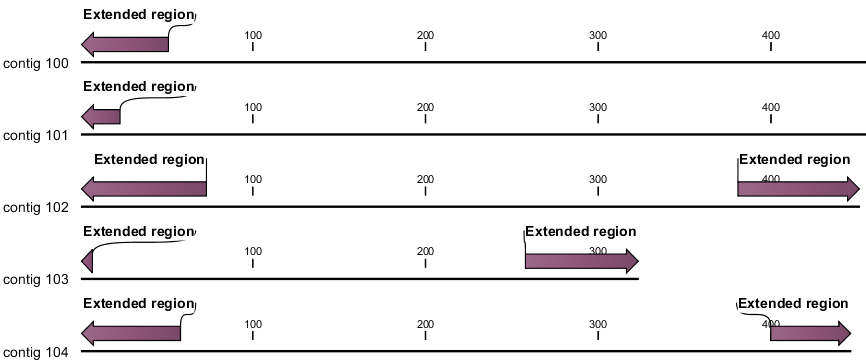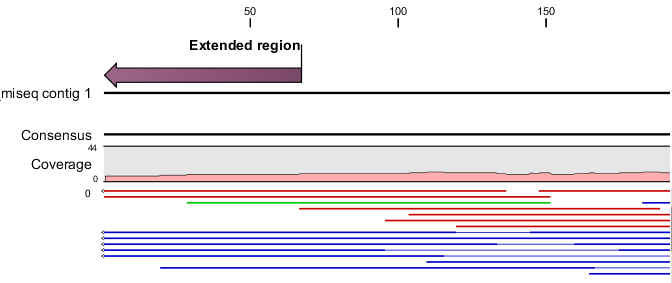Extend Contigs
Contig joining is often based on overlaps between contigs. However, in some cases the de novo assembler create contigs with no or small overlaps between neighboring contigs. In such cases the Extend Contigs tool can be used to create large overlaps, which makes identification of possible joins easier.
When reads are mapped to contigs, reads will often continue outside the start or end of a contig. There can be many reasons for this, but one common cause is repeat regions, which the de novo assembler has failed to connect to a contig. The Extend Contigs tool extends a contig with the consensus of the reads that continue outside the ends of the contig. This will often result in large overlaps between neighboring contigs and enable such contigs to be joined with the automatic join tool. Care should be taken whenever the extended region of a contig constitutes a repeat, and a join should, if possible, be confirmed by other evidence such as paired reads spanning the overlapping region or an alignment of the contigs to a reference sequence.
See figure 10.1 for an example of contigs that have been extended.

Figure 10.1: Example of contigs that have been extended in both directions.
In figure 10.2 the reads used for the de novo assembly have been mapped again to an extended contig.

Figure 10.2: Reads have been mapped to a contig that has been extended.
Subsections
